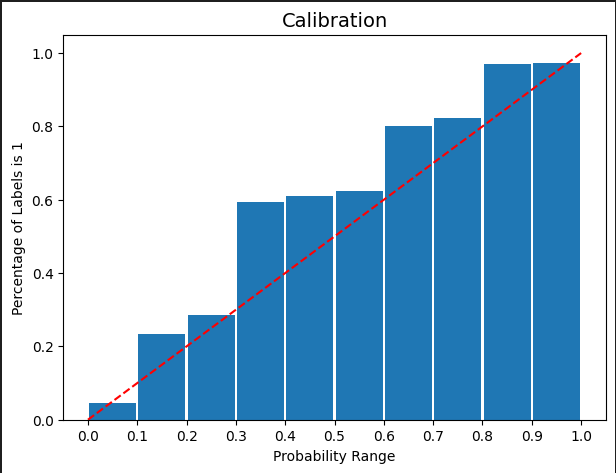

 ## Usage
**Pre-requirements**: \
Install *generated_text_detector* \
Run following command: ```pip install git+https://github.com/superannotateai/generated_text_detector.git@v1.0.0```
```python
from generated_text_detector.utils.model.roberta_classifier import RobertaClassifier
from transformers import AutoTokenizer
import torch.nn.functional as F
model = RobertaClassifier.from_pretrained("SuperAnnotate/roberta-large-llm-content-detector")
tokenizer = AutoTokenizer.from_pretrained("SuperAnnotate/roberta-large-llm-content-detector")
text_example = "It's not uncommon for people to develop allergies or intolerances to certain foods as they get older. It's possible that you have always had a sensitivity to lactose (the sugar found in milk and other dairy products), but it only recently became a problem for you. This can happen because our bodies can change over time and become more or less able to tolerate certain things. It's also possible that you have developed an allergy or intolerance to something else that is causing your symptoms, such as a food additive or preservative. In any case, it's important to talk to a doctor if you are experiencing new allergy or intolerance symptoms, so they can help determine the cause and recommend treatment."
tokens = tokenizer.encode_plus(
text_example,
add_special_tokens=True,
max_length=512,
padding='longest',
truncation=True,
return_token_type_ids=True,
return_tensors="pt"
)
_, logits = model(**tokens)
proba = F.sigmoid(logits).squeeze(1).item()
print(proba)
```
## Training Detailes
A custom architecture was chosen for its ability to perform binary classification while providing a single model output, as well as for its customizable settings for smoothing integrated into the loss function.
**Training Arguments**:
- **Base Model**: [FacebookAI/roberta-large](https://huggingface.co/FacebookAI/roberta-large)
- **Epochs**: 10
- **Learning Rate**: 5e-04
- **Weight Decay**: 0.05
- **Label Smoothing**: 0.1
- **Warmup Epochs**: 4
- **Optimizer**: SGD
- **Scheduler**: Linear schedule with warmup
## Performance
The model was evaluated on a benchmark consisting of a holdout subset of training data, alongside a closed subset of SuperAnnotate data. \
The benchmark comprises 1k samples, with 200 samples per category. \
The model's performance is compared with open-source solutions and popular API detectors in the table below:
| Model/API | Wikipedia | Reddit QA | SA instruction | Papers | Average |
|--------------------------------------------------------------------------------------------------|----------:|----------:|---------------:|-------:|--------:|
| [Hello-SimpleAI](https://huggingface.co/Hello-SimpleAI/chatgpt-detector-roberta) | **0.97**| 0.95 | 0.82 | 0.69 | 0.86 |
| [RADAR](https://huggingface.co/spaces/TrustSafeAI/RADAR-AI-Text-Detector) | 0.47 | 0.84 | 0.59 | 0.82 | 0.68 |
| [GPTZero](https://gptzero.me) | 0.72 | 0.79 | **0.90**| 0.67 | 0.77 |
| [Originality.ai](https://originality.ai) | 0.91 | **0.97**| 0.77 |**0.93**|**0.89** |
| [LLM content detector](https://huggingface.co/SuperAnnotate/roberta-large-llm-content-detector) | 0.88 | 0.95 | 0.84 | 0.81 | 0.87 |
## Usage
**Pre-requirements**: \
Install *generated_text_detector* \
Run following command: ```pip install git+https://github.com/superannotateai/generated_text_detector.git@v1.0.0```
```python
from generated_text_detector.utils.model.roberta_classifier import RobertaClassifier
from transformers import AutoTokenizer
import torch.nn.functional as F
model = RobertaClassifier.from_pretrained("SuperAnnotate/roberta-large-llm-content-detector")
tokenizer = AutoTokenizer.from_pretrained("SuperAnnotate/roberta-large-llm-content-detector")
text_example = "It's not uncommon for people to develop allergies or intolerances to certain foods as they get older. It's possible that you have always had a sensitivity to lactose (the sugar found in milk and other dairy products), but it only recently became a problem for you. This can happen because our bodies can change over time and become more or less able to tolerate certain things. It's also possible that you have developed an allergy or intolerance to something else that is causing your symptoms, such as a food additive or preservative. In any case, it's important to talk to a doctor if you are experiencing new allergy or intolerance symptoms, so they can help determine the cause and recommend treatment."
tokens = tokenizer.encode_plus(
text_example,
add_special_tokens=True,
max_length=512,
padding='longest',
truncation=True,
return_token_type_ids=True,
return_tensors="pt"
)
_, logits = model(**tokens)
proba = F.sigmoid(logits).squeeze(1).item()
print(proba)
```
## Training Detailes
A custom architecture was chosen for its ability to perform binary classification while providing a single model output, as well as for its customizable settings for smoothing integrated into the loss function.
**Training Arguments**:
- **Base Model**: [FacebookAI/roberta-large](https://huggingface.co/FacebookAI/roberta-large)
- **Epochs**: 10
- **Learning Rate**: 5e-04
- **Weight Decay**: 0.05
- **Label Smoothing**: 0.1
- **Warmup Epochs**: 4
- **Optimizer**: SGD
- **Scheduler**: Linear schedule with warmup
## Performance
The model was evaluated on a benchmark consisting of a holdout subset of training data, alongside a closed subset of SuperAnnotate data. \
The benchmark comprises 1k samples, with 200 samples per category. \
The model's performance is compared with open-source solutions and popular API detectors in the table below:
| Model/API | Wikipedia | Reddit QA | SA instruction | Papers | Average |
|--------------------------------------------------------------------------------------------------|----------:|----------:|---------------:|-------:|--------:|
| [Hello-SimpleAI](https://huggingface.co/Hello-SimpleAI/chatgpt-detector-roberta) | **0.97**| 0.95 | 0.82 | 0.69 | 0.86 |
| [RADAR](https://huggingface.co/spaces/TrustSafeAI/RADAR-AI-Text-Detector) | 0.47 | 0.84 | 0.59 | 0.82 | 0.68 |
| [GPTZero](https://gptzero.me) | 0.72 | 0.79 | **0.90**| 0.67 | 0.77 |
| [Originality.ai](https://originality.ai) | 0.91 | **0.97**| 0.77 |**0.93**|**0.89** |
| [LLM content detector](https://huggingface.co/SuperAnnotate/roberta-large-llm-content-detector) | 0.88 | 0.95 | 0.84 | 0.81 | 0.87 |